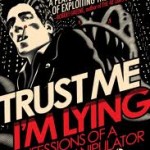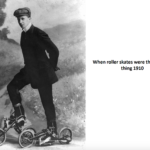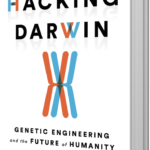February 12th, 2017 — 12:01am
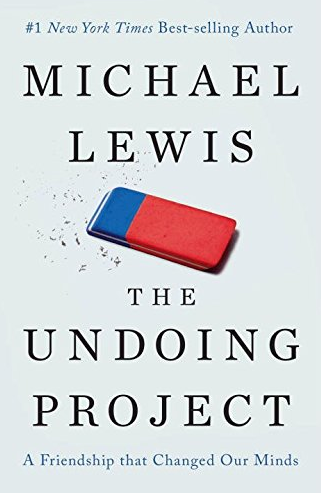 The Undoing Project: A Friendship That Changed Our Minds by Michael Lewis
The Undoing Project: A Friendship That Changed Our Minds by Michael Lewis
Michael Lewis is a popular writer who has written best-selling books on interesting economic issues. Two-and-a-half years ago in 2014, I reviewed Flash Boys where he provided a fascinating insight into the crafty manipulations of ultra-fast electronic trading. Another favorite book of mine was Moneyball (2003) where Lewis told the story of how computerized statistical analyses were changing how sport franchises were being run. He was also known for The Blind Side (2006), The Big Short (2010) and Liar’s Poker (1989), as well as several other books dealing with various aspects of Wall Street.
This time he takes on the story of two Israeli psychologists, Daniel Kahneman and Amos Tversky who through scientific evidence-based research provided unique insight into the human decision-making processes. They showed how human logic is often not very “logical”.
Prior to elaborating on their fascinating collaboration, Lewis traced each of their lives. Although they were both outstanding heroes in intellectual university circles and in the military service in the Israeli armed forces during wartime, they had contrasting personalities. This book provides a study of each of them. One was an extrovert and the other was an introvert who was a fugitive from the Nazis in his childhood. As their collaboration matured, they were a couple who could finish each others’ sentences and were never sure which of them had originated a particular idea. This was particularly interesting because when prizes including a Nobel Prize were being handed out later in their careers, one was much more favored than the other.
One of the fun parts of the book is that in some of their groundbreaking experiments in which they asked their subjects relatively simple questions about predicting “so-called random behavior,” the reader of this book is provided with some of these questions and asked to give his or her answer, and you can then you are shown the defects in your thinking.
The far-reaching implications of much of their work, is illustrated by the wide range of business and government agencies who sought their advice. One example was the airline industry who wanted help in preventing mistakes in logic made by airline captains during an emergency which led to fatal air crashes. Their solution was that you cannot prevent the mistakes in logic that the commander of a plane might make it an emergency situation, but you could change the cockpit culture where no one was allowed to disagree with the captain especially in an emergency.
I did feel that some of the dismissal of psychoanalytic theory by the brilliant duo did not appreciate that such theory was never meant to predict human behavior but rather to understand it in retrospect and therefore find a process to relieve psychological suffering.
Overall this book was as a worthwhile experience as were Lewis’ other books which I have read. It was quite enlightening and most enjoyable.
To obtain a copy of this book on Amazon, please click here
2 comments » | E- Economic
April 6th, 2014 — 10:03pm
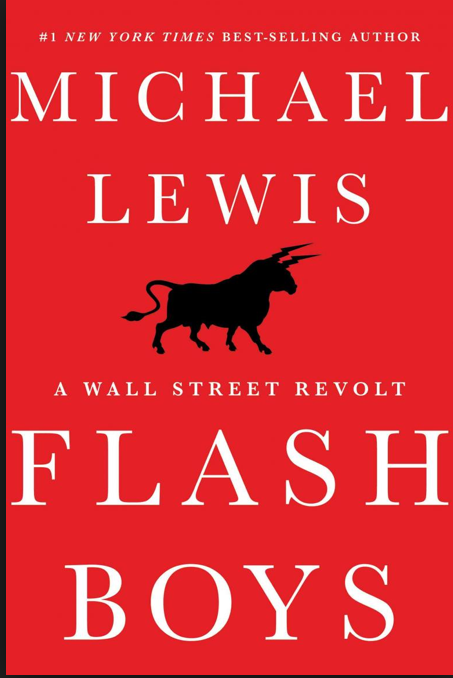 Flash Boys by Michael Lewis- This book is causing both great interest and high emotion on Wall Street since its recent release. The author, Michael Lewis, has great credentials as a reliable reporter, which he has demonstrated in several important books including best sellers Moneyball and Liar’s Poker. This book mesmerized me but to be perfectly honest, most of the time I did not understand what the author was talking about especially when he was explaining the exact details of how electronic trading really works. Apparently, according to the author, most of the traders on Wall Street also really don’t know what goes on behind the computer screen. However, that is exactly what this book is all about.
Flash Boys by Michael Lewis- This book is causing both great interest and high emotion on Wall Street since its recent release. The author, Michael Lewis, has great credentials as a reliable reporter, which he has demonstrated in several important books including best sellers Moneyball and Liar’s Poker. This book mesmerized me but to be perfectly honest, most of the time I did not understand what the author was talking about especially when he was explaining the exact details of how electronic trading really works. Apparently, according to the author, most of the traders on Wall Street also really don’t know what goes on behind the computer screen. However, that is exactly what this book is all about.
Early in the book the reader learns that millions of dollars are being spent to lay a black tube filled with fiberglass cable from Chicago to New Jersey and to make it as straight as possible. This will allow electronic signals that carry information between brokerage houses and the various stock exchanges to flow as fast as possible. One of the goals of this project is to let the people who sign up to use it be faster than all the other guys who don’t use it. However, that is not the whole story. We also learn that some brokerage firms spend lots of money to move their computer servers closer to the main stock exchange buildings in New York and New Jersey in order to shorten the travel time of the electronic messages. We are talking about increasing their speed by thousandths of a second, faster than the blink of an eye. With or without new cable there are all sorts or tricks or techniques to manipulate the speed and timing of the electronic impulses, which convey information involved in buying and selling stock. Certainly, speed really counts but things are even more complicated. Stock traders who do a lot of trades called High Frequency Traders (HFT) have special computer programs that have tricky computer maneuvers. For example, if they have a 10,000-share order they will send out a signal for an order of 100 shares. This allows the computer to figure out the current selling price and then the computer in blinding fast speed sends the rest of the order to various other exchanges and ends up making purchases a fraction of a cent better than if they didn’t have this super speed ability. It gets even more complicated as there are all sorts of commissions and bonuses per share that depend where and when the sale is made. Oh, also there are “dark pools” which are locations in cyberspace where various brokerage firms will make trades from their own clients without routing orders to the various exchanges. This saves money but doesn’t necessarily get the best price for the customers. There are 13 public stock exchanges (NY Stock Exchange, American Stock Exchange, NASDEQ and 10 more) plus 45 dark pools.
If this were just a book about computer programing and the ins and outs of the market, I would have given up on it early on. There also is a human side of this story, which is about some of the so called computer geeks that work designing these systems and making them work, as well as some of the higher ups who run the various brokerage and stock exchanges. It should be noted that many of these people earn hundreds of thousands of dollars per year and some make a few million dollars per year and those at the very top make much more. There are some heroes in this book. One in particular will be mentioned. His name is Brad Katsayama. He and a few colleagues figured out that super speed trading gives certain brokers an unfair advantage. Initially they designed a program to make the information from a trade arrive evenly at the same speed. (Needless to say this is a simplified explanation). They believed that this made for fairer business transactions. Then after many machinations they brought together a team that was dedicated to build their own stock exchange. The purpose would be to run super speed trading that would give no special advantage and no one would get special bonuses or commissions for tricky manipulations in how a block of stock was transacted in their stock exchange, which is named IEX (Investors Exchange). There were some very exciting moments as they built the exchange and waited with baited breath on the opening day to see if it would work and attract what they believed would be fair minded traders. Spoiler Alert! Goldman Sacks led the way and ultimately other firms would follow and IEX became a successful endeavor.
Lest you think that Goldman sacks is presented as one of the heroes of this book, there is a very scary situation described in the book where a man
by the name of Sergey Aleynkove is harshly sentenced to 8 years in jail for “stealing” computer code from them. He was one of those geeks who appeared to be more interested in the intricacies of the electronic trading than getting around the laws and regulations. The explanation for what he did that was shown to us was that while at Goldman Sachs he sent himself emails of the code he was working on which he kept when he left the firm. Most of what he used was open code that meant that it was available to anyone for free on the Internet and the rest of it wasn’t really usable outside of Goldman Sacks. Nevertheless they pressed charges and he was convicted. We are led to believe this is about the paranoid atmosphere when the secret world of electronic trading is being exposed.
The impression that Michael Lewis leaves us with this book is that stock market trading is mostly rigged and there is manipulation, skimming and deception. While there has been a genuine growth from which most investors profit in the long run, the everyday details are dark and dirty. They are also very difficult to understand. They are embedded in the nano second impulses that flash back and forth in the hands of the people who run our financial markets.
Comment » | E- Economic, P - Political
 The Undoing Project: A Friendship That Changed Our Minds by Michael Lewis
The Undoing Project: A Friendship That Changed Our Minds by Michael Lewis
